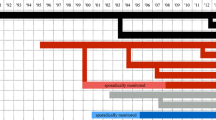Abstract
The two subspecies of ruffed lemurs (Vareica variegata variegata andVarecia variegata rubra) have been maintained in captivity since 1959 and all institutions which hold ruffed lemurs have contributed data to theVarecia International Studbook. Studbook data were used to analyze inbreeding effects on survival in both subspecies ofVarecia. Several variables, including offspring's inbreeding coefficient, litter size, mother's inbreeding coefficient, and mother's age, were examined for significant associations with percent survivorship per litter. Percent survivorship per litter was negatively correlated to the offspring inbreeding coefficient in the black and white ruffed lemurs (p<0.001) but no significant association was found for red ruffed lemurs. Although emphasis has been put towards the status of the red ruffed lemurs due to the small founder size, the black and white ruffed lemurs should also be managed with care due to the lower tolerance to inbreeding in captivity.
Similar content being viewed by others
References
Baker A.E.M., 1981.Gene flow in house mice: introduction of a new allele into freeliving populations. Evolution, 35: 243–258.
Benirschke K., 1986.Hereditary conditions of nonhuman primates. In: K. Benirschke, ed. Primates: the road to self-sustaining populations, pp. 875–886. Springer-Verlag.
Benirschke K., Kumamoto A.L. &Bogart M.H., 1981. Congenital anomalies in Lemur variegatus. Journal of Medical Primatology, 10: 38–45.
Benirschke K., Miller C., Ippen R., &Heldstab A., 1985.The pathology of prosimians, especially lemurs. Advances of Veterinary Science & Comparative Medicine, 30: 167–208.
Bogart M.H., Cooper R.W. &Benirschke K., 1977a.Reproductive studies of black and white ruffed lemurs. International Zoo Yearbook, 17: 177–182.
Bogart M.H., Kumamoto A.L. &Lasley B.L., 1977b.A comparison of the reproductive cycle of three species of Lemur. Folia Primatology, 28: 134–143.
Boskoff K.J., 1977.Aspects of reproduction in ruffed lemurs (Lemur variegatus). Folia Primatology, 28: 241–150.
Brockman D.K., 1986. International studbook of the ruffed lemurs. Zoological Society of San Diego. San Diego, CA. 73 pp.
Brockman D.K., Willis M.S. &Karesh W.B., 1987a.Management and husbandry of ruffed lemurs, Varecia variegata,at the San Diego zoo. I. captive population, San Diego zoo housing and diet. Zoo Biology, 6: 341–347.
Brockman D.K., Willis M.S. &Karesh W.B., 1987b.Management and husbandry of ruffed lemurs, Varecia variegata,at the San Diego zoo. III. Reproduction, pregnancy, parturition, litter size, infant care, and reintroduction of hand-raised infants. Zoo Biology, 6: 349–363.
Chesser R.K., Smith M.H. &Brisbin Jr. I.L., 1980.Management and maintenance of genetic variability in endangered species. International Zoo Yearbook, 20: 146–154.
Falconer D.S., 1981. Introduction to Quantitative Genetics. Longman, Essex, U.K.
Foerg R., 1982.Reproductive behavior in Varecia variegata. Folia Primatology, 38: 108–121.
Goodwin L.G., 1982.Annual report; ruffed lemurs. Journal of Zoology, 197: 17.
Hoogland J.L., 1982.Prairie dogs avoid extreme inbreeding. Science, 215: 1639–1641.
IUCNConservation Monitoring Unit., 1984. (Jenkins, M. ed.) An environmental profile of Madagascar. IUCN, Cambridge, UK.
Jolly A., 1986.Lemur Survival. In: K. Benirschke, ed. Primates: the road to self-sustaining populations, pp. 84–87. Springer Verlag.
Karesh W.B., Willis M.S., Czekala N.M. &Lasley B.L., 1985.Induction of a fertile mating in a red ruffed lemur (Varecia variegata rubra)using pregnant mare serum gonadotropin. Zoo Biology, 4: 147–152.
Lewin, R., 1983.Brotherly alliances help avoid inbreeding. Science, 222: 148–151.
Lindsey N.B.D. &Simons H.J., 1986.Notes on Varecia in the northern limits of its range. Dodo, Journal of Jersey Wildlife Preservation Trust, 23: 19–24.
MacCluer J.W., VandeBerg J.L., Read B. &Ryder O.A., 1986.Pedigree analysis by computer simulation. Zoo Biology, 5: 147–160.
Morton N.E., Crow J.F. &Muller H.J., 1956.An estimate of the mutational damage in man from data on consanguineous marriages. Proceedings of the National Academy of Science, 42: 855–863.
Nei M., 1975. Molecular Population Genetics and Evolution. American Elsevier, New York.
Pollock J.I., 1986.The management of Prosimians in captivity for conservation and research. In: K. Benirschke, ed. Primates: The Road to Self-sustaining Populations, pp. 269–288. Springer-Verlag.
Ralls K. &Ballou J., 1979.Inbreeding and juvenile mortality in small Populations of ungulates. Science, 206: 1101–1103.
Ralls K. &Ballou J., 1982.Effects of inbreeding on infant mortality in captive primates. International Journal of Primatology, 3: 491–505.
Ralls K. & Ballou J., 1983.Extinction: lessons from Zoos. In (C. M. Schonewald-Cox, S. M. Chambers, B. Macbryde, and W. L. Thomas, eds.). Genetics and Conservation, pp. 164–184. The Benjamin/Cummings Publishing Company, Inc.
Ralls K., Ballou J.D. &Templeton A., 1988.Estimates of lethal equivalents and the cost of inbreeding in mammals. Conservation Biology, 2: 185–193.
Ralls K., Harvey P.H. & Lyles A.M., 1985.Inbreeding in natural Populations of birds and mammals. In: M. Soule, ed. Conservation Biology, the science of scarcity and diversity, pp. 35–56. Sinauer Associates, Inc.
Richard A.F., 1986.Malagasy prosimians: female dominance. In: B. B. Smuts, D.L. Cheney, R.M. Seyfarth, R.W. Wrangham, and T.T. Struhsaker, eds. Primate Societies, pp. 25–33. Chicago Press.
SAS. 1985.Statistical analysis system user's guide: statistics version. edition 5. SAS Institute Inc. Cary, NC. 956 pp.
Slatis H.M., 1960.An analysis of inbreeding in the European bison. Genetics, 45: 275–288.
Tattersall I., 1982. The Primates of Madagascar. Columbia University Press. New York.
Templeton A.R., 1987.Inferences on natural population structure from genetic studies on captive mammalian populations. In: B.D. Chepko-Sade and Z.T. Halpin, eds. Mammalian Dispersal Patterns: the effects of social structure on population genetics, pp. 257–274. University of Chicago Press.
Templeton A.R. &Read B., 1984.Factors eliminating inbreeding depression in a captive herd of Speke's gazelle. Zoo Biology, 3: 177–199.
Wildt D.E., Bush M., Goodrowe K.L., Packer C., Pusey A.E., Brown J.L., Joslin P. &O'Brien S.J., 1987.Reproductive and genetic consequences of founding isolated lion populations. Nature, 329: 328–330.
Author information
Authors and Affiliations
Rights and permissions
About this article
Cite this article
Noble, S.J., Chesser, R.K. & Ryder, O.A. Inbreeding effects in captive populations of ruffed lemurs. Hum. Evol. 5, 283–291 (1990). https://doi.org/10.1007/BF02437244
Received:
Accepted:
Issue Date:
DOI: https://doi.org/10.1007/BF02437244




